Five years have passed since 2016, when the first generation of consumer VR headsets represented by brands such as Oculus, HTC Vive, and Sony were officially launched. In this process, the VR headsets of major brands have been changed for several generations, but the appearance has not been greatly improved: a huge shell surrounds the facial area, and the optics and display system occupy most of the inside of the shell. space.
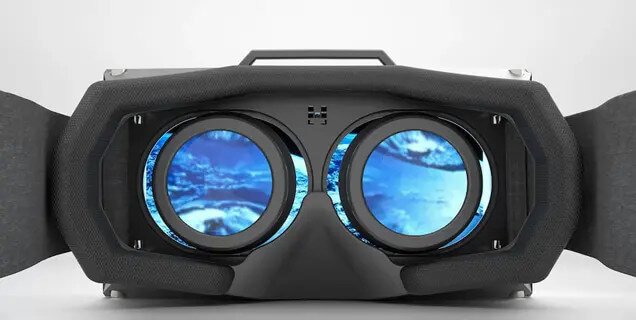
With the iterative hardware and technology upgrade, we are enjoying the more and more powerful SoC performance, better and better display effect, and more and more accurate spatial positioning and tracking, but how to design more volume Smaller, lighter, and higher-resolution VR headsets have always been a big mountain in front of various hardware brands.
However, with the continuous development of micro-display technology in recent years, the next generation of VR/AR devices is expected to further reduce the size and weight, to truly have a veritable “glasses” appearance and become a fashionable consumer electronic product sought after by the public.
What is the microdisplay technology?
A microdisplay is a display that has a very small screen. The screen size of microdisplays is usually less than two inches diagonal. This type of tiny electronic display system was introduced commercially in the late 1990s. The most common applications of microdisplays include rear-projection TVs and head-mounted displays. Microdisplays may be reflective or transmissive depending upon the way light is allowed to pass through the display unit.
Microdisplay technology is a branch of the display technology field, and it is not a very new concept, but it was born to solve the display problem of HMD (head-mounted display, that is, helmet or head-mounted display): The first display device with the characteristics of “micro-display” is to use a helmet-mounted mini-CRT equipped with an optical magnifying device to display pictures near the human eye.
With the continuous development of the market, display devices require the replacement of CRT with alternatives with a smaller area, lighter weight, and lower power consumption. This is also the development direction pursued by microdisplay technology.
| Size | Resolution | Dimension | Active Area | Interface | Brightness | Driver Board |
| 0.32 | 800*600 | 9.55*9.14*1.475mm | 6.48*4.86mm | MIPI/ RGB | 2000nit | HDMI |
| 0.39 | 1920*1080 | 9.5*11.1*1.35mm | 8.7495*4.968*mm | MIPI | 300nit | HDMI |
| 0.49 | 1920*1080 | 15.68*9.09*1.5mm | 10.783*6.065mm | MIPI | 1800nit | HDMI |
| 0.71 | 1920*1080 | 25.24*19.4*1.925mm | 15.8*8.99*mm | LVDS | 300nit | HDMI |
| 0.72 | 1920*1200 | 19.97*15.5*1.475mm | 15.552*9.72mm | MIPI | 2000nit | HDMI |
| 1.03 | 2560*2560 | 22.77*21.09*1.5mm | 18.432*18.432mm | MIPI | 1800nit | HDMI |
Four Microdisplay Technologies
According to different imaging principles, microdisplay technology can be divided into LCD microdisplay technology, LCoS (Liquid Crystal on Silicon, liquid crystal on silicon) microdisplay technology, Micro LED microdisplay technology, and Micro OLED microdisplay technology that has emerged in recent years.
LCD Micro Display Technology

LCD micro-display technology is a transmissive micro-display technology. The relatively mature solution is called the active-matrix liquid crystal display (AMLCD) solution. The light emitted by the backlight is modulated by the liquid crystal cell as it passes through each pixel. The liquid crystal cell is controlled by the transistor on the display.

Kopin has developed a unique Cyberdisplay micro-display solution based on the AMLCD solution. Cooperative companies include Shenzhen Dongfangjing, Japan Scalar, Tecom, Mitsubishi Electric, Olympus, American Microoptical, Yello Mosquito, etc.
LCoS Micro Display Technology
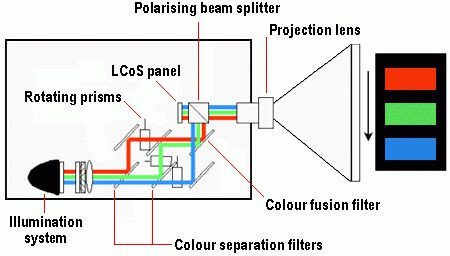
LCoS micro-display technology is a new reflective liquid crystal projection technology that combines semiconductor and LCD technology. It mainly reflects external light sources for imaging. Compared with LCD micro-display technology, it has the advantages of simple product structure and low cost, but the disadvantage is The volume should be relatively larger.
The LCoS display was originally developed for large-screen projectors, but the subsequent LCoS micro-display technology has found a consumer market in the field of micro-projectors and has been widely used in the field of AR headsets and automotive HUDs.
At the same time, LCoS microdisplay technology has also been applied to some near-eye devices, such as digital cameras, film cameras, and electronic viewfinders for head-mounted displays. These devices are made of ferroelectric liquid crystals (called FLCoS), which are faster than other types of liquid crystals and can produce high-quality images.
At present, LCoS micro-display solution suppliers mainly include JVC, TMDC (Taiwan MicroDisplay Corporation), Himax, Syndiant, HOLOEYE Systems, and FLCoS micro-display solution providers Displaytech, Gaoping Electronics, etc.
Micro LED Micro Display Technology
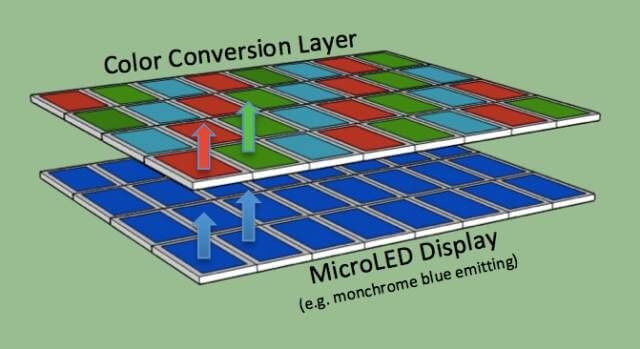
Micro LED micro-display technology has been a hot topic in recent years. It refers to a high-density, small-size LED array integrated on a chip so that each pixel of the LED display can be addressed and individually driven to light up. Seen as a miniature version of the outdoor LED display, the pixel distance has been reduced from millimeters to micrometers.
The advantages of the Micro LED microdisplay are obvious. It not only inherits the high efficiency, high brightness, high reliability, and fast response time of inorganic LEDs but also has the characteristics of self-luminous without backlight, which reduces the polarization and packaging layer. The requirements can be said to include many advantages such as energy-saving, simple structure, small size, and thin profile.
In addition, because LEDs can be made into ultra-small sizes, Micro LED displays also have ultra-high resolution characteristics, which can easily reach more than 1500ppi.
Micro OLED Micro Display Technology
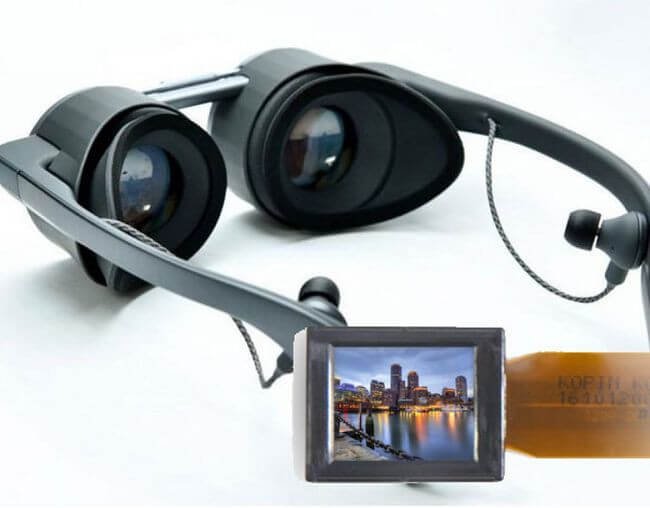
Micro OLED microdisplay technology is a newly emerging microdisplay technology in the last 3-5 years. It is developed from the already very mature OLED display technology. It is now able to compete with LCD and LCoS microdisplay technology in terms of price and performance.
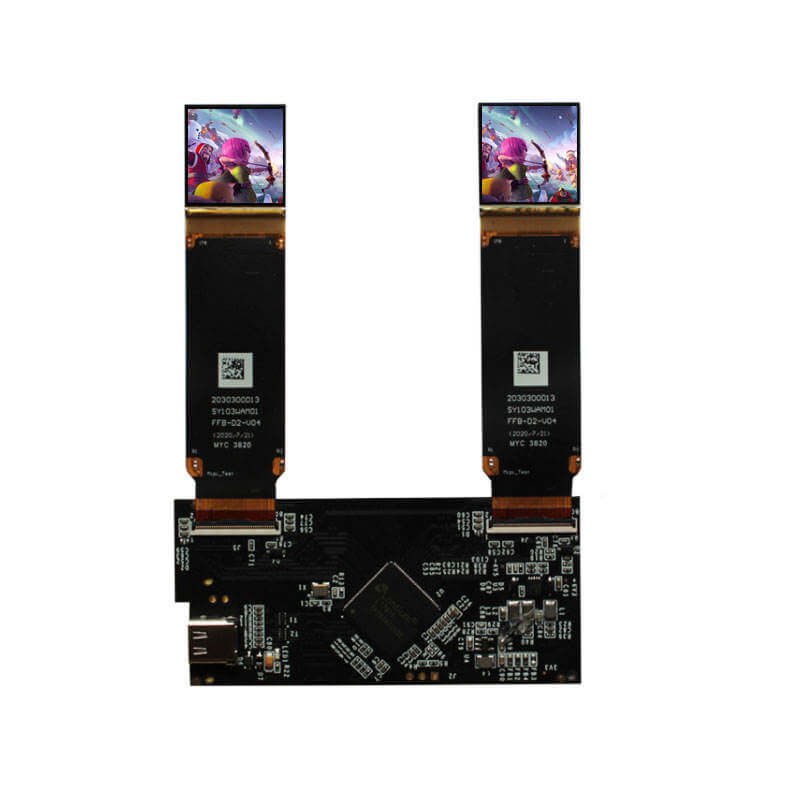
The application of OLED micro-display technology in the AR/VR field has huge advantages: clear and bright full-color display, ultra-low power consumption, etc. At the same time, it is not as “out of reach” as Micro LED. It can be described as a VR/AR head display. A major driving force for development, almost iron nails will become the cornerstone of a new generation of display systems in this field.
Currently, there are 0.39-inch full HD 1080p micro displays and 0.71-inch micro screen 1920*1080 displays which are mostly used for AR VR Field. Both of them can go with a Type-C controller board. Due to the technology still in development, the cost is much more expensive than ordinary VR AMOLED displays like 3.81inch or 2.95inch.

At the same time, a new display technology combining semiconductor and OLED-OLEDoS (OLED on Silicon, silicon-based OLED) has emerged, that is, organic light-emitting diodes (OLED) are directly fabricated on monocrystalline silicon integrated circuit chips (including pixel active Matrix, control circuit, related display drive circuit, IO interface circuit, and other functional components) are one of the active organic light-emitting diodes (AMOLED), which will be the main solution for the next generation of smart wearable displays.
In general, as a transition before Micro LED technology is immature, Micro OLED will accompany the growth of the VR/AR industry for a long time. What changes will Micro OLED bring to the industry by integrating the advantages of OLED technology and being able to be on par with other microdisplay solutions in terms of cost? Maybe shortly, we will be able to see it.

